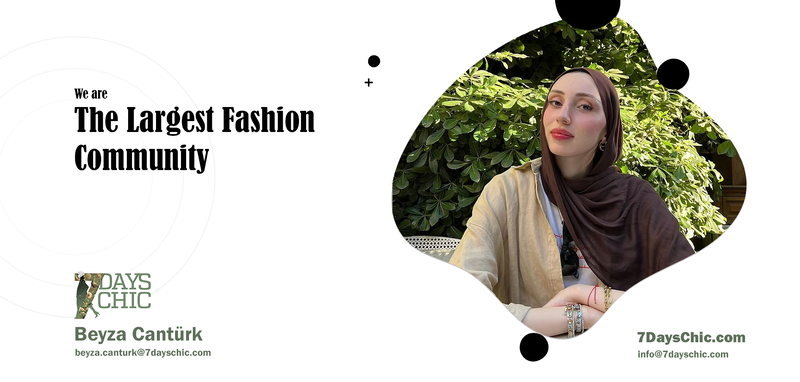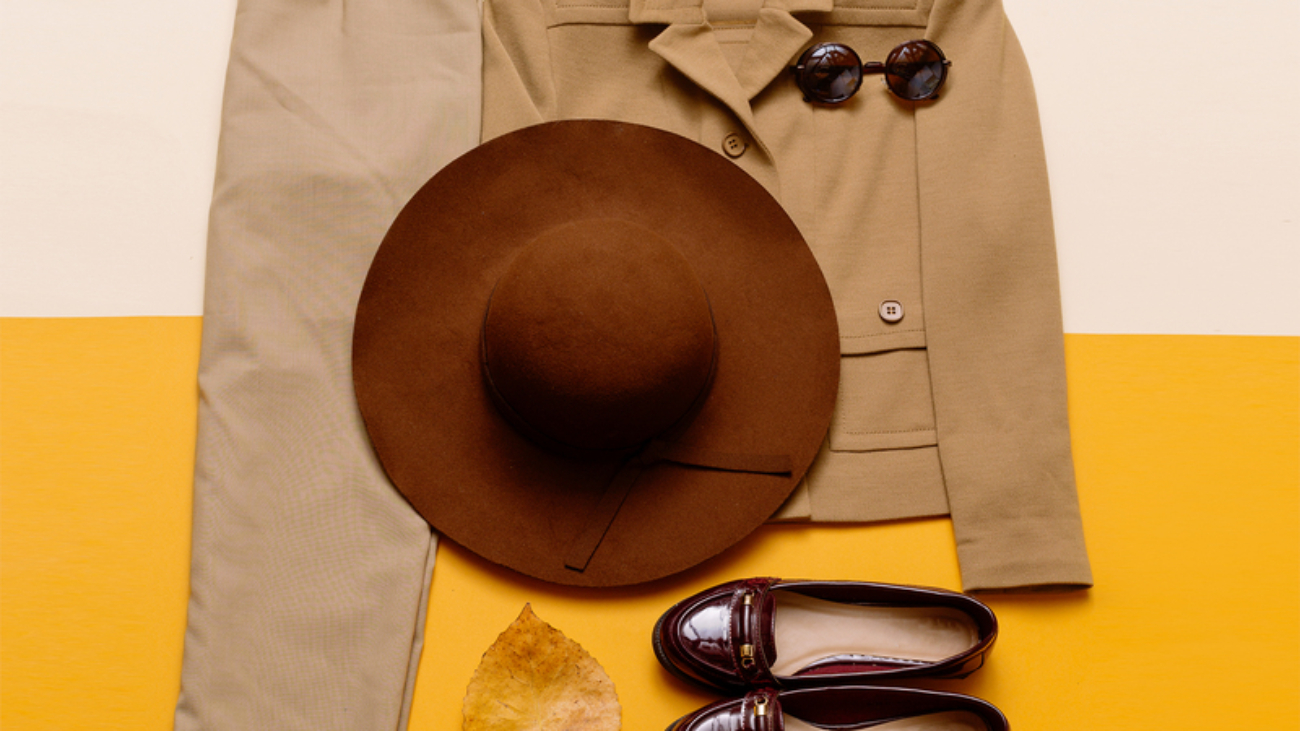1. Introduction: The Importance of Personal Style and Daily Outfits
Personal style has always been a crucial aspect of how individuals present themselves to the world. It not only helps boost confidence but also serves as a form of self-expression. The way we dress can influence how we feel and how others perceive us. Whether it’s choosing the right outfit for a professional setting or simply reflecting your mood, style plays an important role in our day-to-day lives.
Boosting Confidence and Self-Expression
Dressing well has a direct impact on how confident we feel. Wearing an outfit that makes you feel good can lead to higher self-esteem and a more positive mindset.
- Example 1: Wearing a tailored blazer in a work setting not only gives a professional appearance but also helps you feel empowered and confident in your abilities.
- Example 2: Casual outfits with vibrant colors, like a floral dress or bright shoes, can lift your mood and energize you throughout the day. Self-expression through clothing is another key aspect. Fashion allows people to convey their individuality and creativity.
- Example 3: Someone who is artistic might choose bold patterns and unique accessories that reflect their personality and artistic flair.
- Example 4: Minimalists might opt for simple, well-crafted clothing pieces that emphasize quality over quantity, reflecting their preference for simplicity and mindfulness.
Small Changes, Big Impact
Even small adjustments to your daily outfits can lead to a significant impact on how you present yourself. You don’t have to invest in an entirely new wardrobe to elevate your style-simple tweaks can make all the difference.
- Example 1: Adding a statement necklace or bold earrings to a plain top can transform the outfit from basic to chic.
- Example 2: Incorporating layers, such as a cardigan or jacket, can give dimension to an outfit, making it more dynamic and stylish.
A single accessory or an unexpected pairing can make a casual look feel polished or a formal outfit more relaxed. The key is understanding how to mix and match what you already own to create fresh, exciting looks with minimal effort.
Adapting Your Style to Reflect Personality and Lifestyle
Personal style should be adaptable to your personality, needs, and lifestyle. There’s no one-size-fits-all solution when it comes to fashion–what works for one person might not work for another. It’s essential to tailor your wardrobe to reflect your daily activities, professional requirements, and individual traits.
- Example 1: For someone working in a creative field, bold and unconventional clothing choices might better reflect their innovative thinking. They might wear bright patterns or mix textures that make them stand out in their environment.
- Example 2: On the other hand, a professional in the corporate world may need a more conservative wardrobe. Neutral tones, tailored suits, and classic styles often signal competence and reliability in a business setting.
Lifestyle is also a significant factor when it comes to curating a wardrobe. Busy parents, for example, need outfits that are both practical and stylish, allowing them to transition seamlessly from work to family activities without sacrificing comfort.
- Example 3: A stay-at-home parent might choose versatile, comfortable outfits such as athleisure or casual chic clothing, which are easy to move around in while still looking put-together.
- Example 4: A frequent traveler might favor wrinkle-resistant fabrics and versatile clothing that can easily be dressed up or down, making packing and dressing on the go more manageable.
In conclusion, how we dress on a daily basis matters more than we may think. From boosting confidence and self-expression to making small yet impactful changes, personal style plays a significant role in our daily lives. Understanding how to adapt your wardrobe to reflect both your personality and lifestyle can not only enhance your appearance but also improve your overall well-being and the way others perceive you. Small, thoughtful choices in your outfits can make all the difference in how you navigate the world each day.
2. Core Concepts for Elevating Your Style
The Power of Simplicity: Why “Less is More” in Fashion
In fashion, simplicity often leads to elegance. A minimalist approach-focusing on clean lines, neutral colors, and well-tailored pieces-creates timeless looks that are versatile and effortless.
- Example 1: A classic white shirt paired with black trousers can be transformed with accessories or a statement coat, without overwhelming the overall look.
- Example 2: A monochromatic outfit in beige or black can make a bold yet refined statement.
Simplicity also reduces decision fatigue by offering a streamlined wardrobe where each piece can be mixed and matched easily. This is why capsule wardrobes have become so popular, as they allow individuals to dress well with fewer items.
Balance and Proportion: Styling for Different Body Types
Understanding body proportions is key to creating flattering outfits. Balancing the top and bottom halves of the body can create a harmonious silhouette.
- Example 1: For individuals with a pear-shaped body, pairing fitted tops with wider-leg pants or A-line skirts helps balance the proportions by drawing attention upward.
- Example 2: For those with an apple-shaped body, emphasizing the waist with a belt or wearing high-waisted pants can create a more balanced and defined figure.
Playing with proportions also involves mixing oversized and fitted pieces. For instance, an oversized sweater paired with skinny jeans or fitted pants creates contrast, avoiding an overwhelming look while maintaining style.
Color Coordination: Matching Colors Effectively
Choosing the right color combinations can make an outfit more cohesive and polished. Understanding the basics of color theory-such as complementary and analogous colors-helps in crafting outfits that stand out.
- Example 1: Complementary colors, like navy blue and burnt orange, create contrast and make each color pop, leading to an eye-catching look.
- Example 2: Analogous colors, such as various shades of blue or green, offer a more subtle and harmonious appearance, ideal for a relaxed and sophisticated style.
In addition to pairing colors, neutral tones like black, white, beige, and gray serve as a foundation for any wardrobe, allowing brighter pieces to shine.
Quality Over Quantity: Investing in Well-Made Pieces
Building a wardrobe with quality, well-made pieces is a long-term investment. High-quality fabrics and craftsmanship not only make clothing last longer but also give the wearer a more polished appearance.
- Example 1: Instead of buying several trendy but cheaply made tops, investing in a few high-quality blouses can elevate an outfit instantly and ensure durability.
- Example 2: A well-fitted coat in a neutral color can be worn for many years, and its timeless design can complement various outfits, whether casual or formal.
Prioritizing quality over quantity encourages mindful consumption, reduces waste, and leads to a wardrobe full of durable, reliable pieces that bring long-term satisfaction.
These core concepts–simplicity, balance, color coordination, and quality-can help anyone elevate their style, creating a wardrobe that is both functional and fashion-forward. By focusing on these principles, individuals can curate outfits that enhance their confidence, reflect their personality, and stand the test of time.
3. Mastering Fit and Proportion
The foundation of a great outfit lies in its fit. Well-fitted clothes can enhance your appearance, highlight your best features, and make even simple outfits look more polished. No matter how stylish or expensive a piece of clothing is, if it doesn’t fit correctly, it can throw off the entire look.
The Importance of Well-Fitted Clothes
Wearing clothes that fit properly is key to looking and feeling your best. Well-fitted garments follow the natural shape of your body, creating a more streamlined appearance. Ill-fitting clothes, on the other hand, can either look too tight and restrictive or too loose and unstructured, which may make you appear sloppy or unbalanced.
- Example 1: A fitted blazer with properly aligned shoulders and a tailored waist instantly sharpens a professional look.
- Example 2: High-waisted trousers that are the right length and hug the waist without being too tight will elongate the legs and create a smooth silhouette.
Clothes that fit well don’t have to be tight. The goal is to find a balance between comfort and structure. Oversized clothing can still work if the fit is intentional, like pairing a loose sweater with fitted jeans to create a balanced look.
How Tailoring Can Instantly Improve Your Outfit
Tailoring is one of the simplest ways to elevate your wardrobe. Even minor alterations, like adjusting the length of pants or taking in a waist, can make a big difference. Tailoring ensures that your clothing fits your body exactly as it should, highlighting your best features and making off-the-rack items look custom-made.
- Example 1: Shortening the sleeves of a shirt to hit right at the wrist can prevent you from looking like you’re drowning in fabric.
- Example 2: Taking in the sides of a dress or top can create a more defined silhouette, making you look more put-together.
Tailoring is especially important for professional clothing like suits and blazers, where fit can directly affect how you are perceived. A well-tailored suit not only enhances your physical appearance but also gives an air of confidence and sophistication.
Tips for Choosing the Right Cuts and Silhouettes for Your Body Type
Understanding your body type is essential when selecting clothes that will flatter your figure. Different cuts and silhouettes work better for different body shapes, and knowing which styles complement your shape can help you feel more confident in your clothing choices.
- Hourglass Shape: For individuals with a balanced bust and hips and a defined waist, clothes that emphasize the waist are ideal. Fitted dresses, wrap tops, and belted jackets work well to highlight your curves.
- Example: A wrap dress cinches at the waist and follows the natural curves of the body, offering a flattering and feminine silhouette.
- Apple Shape: If you carry more weight around the midsection, opt for clothes that elongate the torso and draw attention to the legs or shoulders. A-line dresses, V-neck tops, and straight-leg pants work well for this body type.
- Example: An empire-waist dress that fits just below the bust creates a flattering shape while drawing attention away from the midsection.
- Pear Shape: If you have wider hips and a smaller upper body, choose clothes that balance your proportions by accentuating the upper body. Structured tops, off-the-shoulder blouses, and wide-leg pants can help create a more proportional look.
- Example: A structured, fitted blazer with padded shoulders can help balance wider hips and draw the eye upward.
- Rectangle Shape: For those with a straighter body type, adding definition to the waist is key. Belts, peplum tops, and fit-and-flare dresses can create the illusion of curves.
- Example: A peplum top adds volume at the hips and defines the waist, giving the appearance of an hourglass figure.
Regardless of body type, always consider the proportions of your outfit. Pairing a fitted piece with something looser, like slim pants with an oversized coat, helps create balance and adds interest to your look.
In conclusion, mastering fit and proportion is one of the most important steps to elevate your style. Clothes that fit well not only make you look better but also boost your confidence. Tailoring allows you to adjust clothing to your unique shape, ensuring that everything fits perfectly. Finally, understanding which cuts and silhouettes work best for your body type can help you choose outfits that flatter your figure, enhancing your overall appearance. With these principles, you can create a wardrobe that is both stylish and comfortable, tailored to your personal needs and tastes.
4. Creating a Capsule Wardrobe
What Is a Capsule Wardrobe?
A capsule wardrobe is a streamlined collection of clothing essentials designed to maximize versatility and minimize decision fatigue. This concept revolves around curating a limited number of high-quality pieces that can be mixed and matched for various occasions, allowing individuals to express their style without the overwhelming clutter of excessive clothing. The term was popularized in the 1970s by designer Susie Faux, who aimed to promote a more sustainable and thoughtful approach to fashion.
Embracing a capsule wardrobe offers several benefits:
- Efficiency: Simplifying your wardrobe means spending less time deciding what to wear, making daily outfit selection quicker and easier.
- Versatility: Each piece is chosen for its ability to work in multiple outfits, providing endless combinations without needing a large number of items.
- Sustainability: Focusing on quality over quantity encourages mindful consumption and can significantly reduce waste in the fashion industry.
Essential Pieces Every Wardrobe Needs
To build a successful capsule wardrobe, it’s crucial to select essential pieces that are both versatile and timeless. Here are some key items that form the foundation of a well-rounded capsule wardrobe:
- Classic Jeans: A reliable pair of well-fitting jeans is a wardrobe staple that can be dressed up or down. Whether you prefer skinny, straight-leg, or bootcut styles, choose a pair that flatters your body shape and can transition from casual outings to more formal settings.
- White Shirt: A classic white button-up shirt or a simple white tee is a must-have in any capsule wardrobe. It can be easily paired with jeans, skirts, or trousers, making it suitable for both casual and professional environments.
- Blazer: A tailored blazer adds a polished touch to any outfit. It can be worn over dresses or paired with jeans and a t-shirt to elevate a casual look. Investing in a neutral color ensures maximum versatility.
- Little Black Dress (LBD): The iconic LBD is a versatile piece that can be worn for a variety of occasions, from cocktail parties to casual dinners. Its simplicity allows for endless styling possibilities, whether paired with heels or ankle boots.
- Neutral Coats and Jackets: Quality outerwear, such as a trench coat or denim jacket, is essential for layering and provides warmth without compromising style. These pieces can easily transition between seasons, making them invaluable in a capsule wardrobe.
Each of these pieces should be chosen in neutral colors and classic styles, which will allow for effortless mixing and matching with other items in your wardrobe.
Continue Reading:
How to Make Your Outfits Better: Elevate Your Daily Style / Part 1
How to Make Your Outfits Better: Elevate Your Daily Style / Part 2
How to Make Your Outfits Better: Elevate Your Daily Style / Part 3
How to Make Your Outfits Better: Elevate Your Daily Style / Part 4
How to Make Your Outfits Better: Elevate Your Daily Style / Part 5
Written by Beyza Cantürk




Add a Comment